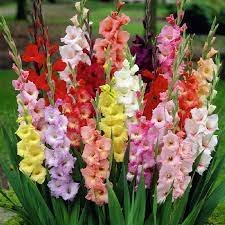**The Orchid in Cultural and Folklore Traditions**

Across various cultures and folklore traditions, the orchid holds a special place as a symbol of beauty, grace, and mystique. Revered for its elegant appearance and delicate fragrance, the orchid has inspired countless myths, legends, and rituals throughout history. From ancient civilizations to modern-day societies, let us delve into the cultural significance and folklore surrounding this enchanting flower.
**Ancient Civilizations:**
In ancient Greece, the orchid was associated with love, fertility, and luxury. According to Greek mythology, orchids were believed to have been created by the gods as symbols of beauty and desire. The name “orchid” is derived from the Greek word “orkhis,” meaning testicle, due to the shape of the orchid’s tuberous roots. Orchids were often featured in art, poetry, and religious ceremonies, symbolizing the fleeting nature of beauty and the cycle of life.
**Eastern Cultures:**
In many Eastern cultures, including China, Japan, and Thailand, orchids hold deep cultural and spiritual significance. In China, orchids are revered as symbols of nobility, elegance, and refinement, often depicted in traditional art and literature as emblems of virtue and grace. Chinese scholars and poets frequently praised orchids for their delicate beauty and enduring resilience, comparing them to virtuous individuals who withstand adversity with grace and dignity.
In Japan, orchids are associated with the aesthetic principles of wabi-sabi, which celebrate imperfection, impermanence, and authenticity. Orchids are often featured in traditional Japanese gardens and tea ceremonies, where their delicate blooms symbolize the transient beauty of nature and the fleeting moments of life.
In Thailand, orchids are deeply ingrained in cultural traditions and religious ceremonies, symbolizing love, respect, and spirituality. Orchid garlands are commonly used as offerings in Buddhist temples and shrines, symbolizing devotion and reverence for the divine.
**Victorian Era and Orchidomania:**
During the Victorian era in Europe, orchids experienced a surge in popularity known as “orchidomania.” Orchid collectors and enthusiasts, fueled by exploration and botanical discoveries, sought out rare and exotic orchid species from around the world, leading to a frenzy of orchid cultivation and hybridization. Orchids became a status symbol among the aristocracy, with elaborate orchid displays featured in fashionable drawing rooms and conservatories.
**Modern Symbolism:**
In modern society, orchids continue to hold symbolic significance in various contexts. In the language of flowers, orchids are often associated with love, luxury, and refinement, making them popular choices for weddings, anniversaries, and other special occasions. Orchids are also used in aromatherapy and holistic healing practices, believed to promote relaxation, balance, and emotional well-being.
**Folklore and Superstitions:**
Throughout history, orchids have been surrounded by folklore and superstitions, with various cultures attributing mystical powers and supernatural properties to these enchanting flowers. In some folk traditions, orchids were believed to possess the ability to ward off evil spirits, bring good luck, or enhance fertility. Conversely, in certain cultures, orchids were considered omens of misfortune or death, leading to superstitions about avoiding or removing orchids from the home.
**Conclusion:**
In conclusion, the orchid’s cultural and folklore traditions reflect its timeless allure and universal appeal. From ancient civilizations to modern-day societies, the orchid has captivated the human imagination with its beauty, grace, and mystique. Whether as symbols of love and beauty or as embodiments of spiritual significance and cultural heritage, orchids continue to inspire wonder and reverence across the globe, enriching our lives with their exquisite presence.
